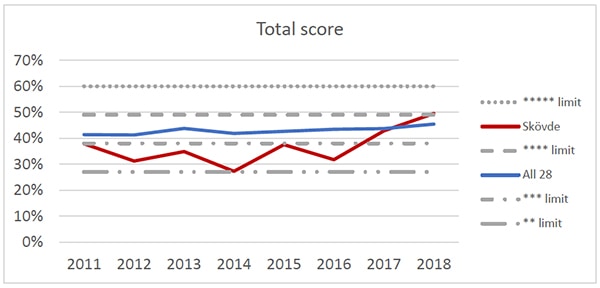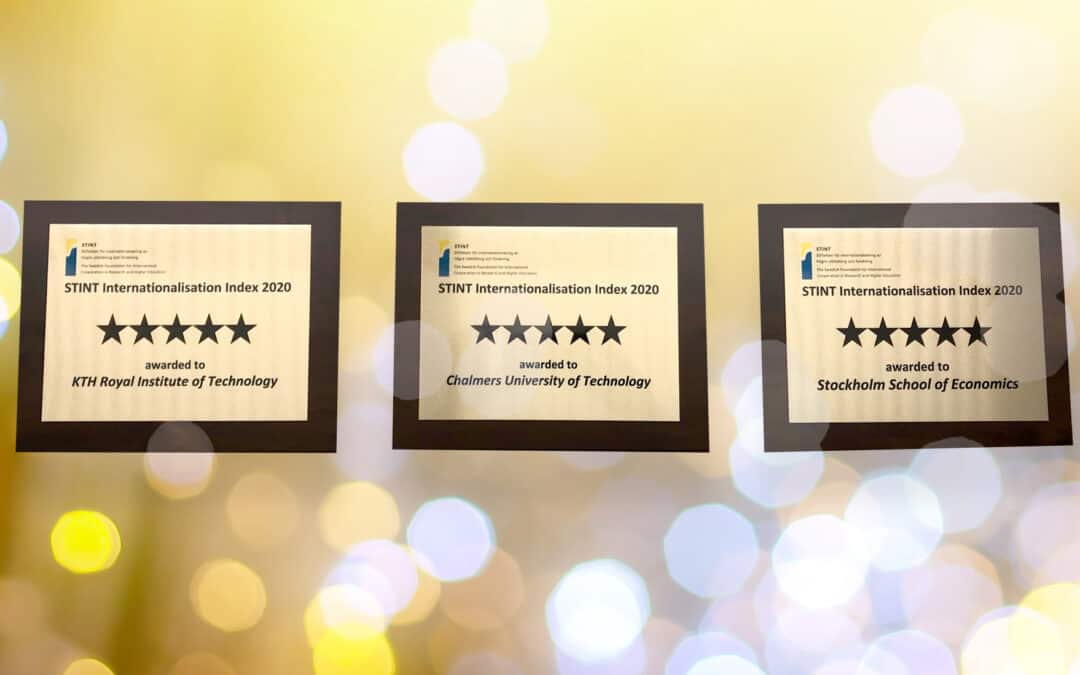STINT, The Swedish Foundation for International Cooperation in Research and Higher Education, annually publishes an index indicating how international Swedish higher education institutions (HEIs) are. As in the previous three years, the maximum of five stars have been awarded to three HEIs: Chalmers University of Technology, KTH Royal Institute of Technology, and the Stockholm School of Economics.
Six dimensions of internationalisation are included in the index and 28 HEIs are rated. The results we launch now are based on data from 2018. Effects from the COVID-19 epidemic will therefore only be seen in the index in two years’ time, after 2020 has been accounted for.
“We are happy to maintain our position as a very internationalised university. With the pandemic, climate crisis and trends of decreasing globalisation, the coming years will present a challenge to internationalisation more broadly and also here at Chalmers. We will endeavour to maintain strong international ties, even some different solutions may be needed in the future. Internationalisation is important to Chalmers,” says Stefan Bengtsson, President and CEO of Chalmers University of Technology.
Of the other HEIs on the list, the University of Skövde climbed to four stars. Just a few years ago, this HEI was on the verge of only being awarded a single star, but it has become increasingly internationalised since, as the red line in the figure indicates. Research has for example become much more international and its share of international PhD students has increased. The overall trend at the 28 HEIs is weakly positive, as shown by the blue line in the figure.

Örebro University and Halmstad University have also been awarded more stars. If this trend continues, Sweden will eventually have quite a number of five-star HEIs. This issue is discussed in a separate interview with Hans Pohl, Programme Director at STINT and creator of the index.
This year, an overview of each HEI has been made available. The number of stars awarded to larger HEIs does not often change, and therefore more details on research, students, staff and management have been requested. Is the HEI on the right track? Which are the strong or weak areas? A document is available on each HEI with seven diagrams indicating development in the different areas as well as the total score.
The table on the right shows the index results for all HEIs. Arrows indicate changes compared to the previous year.

